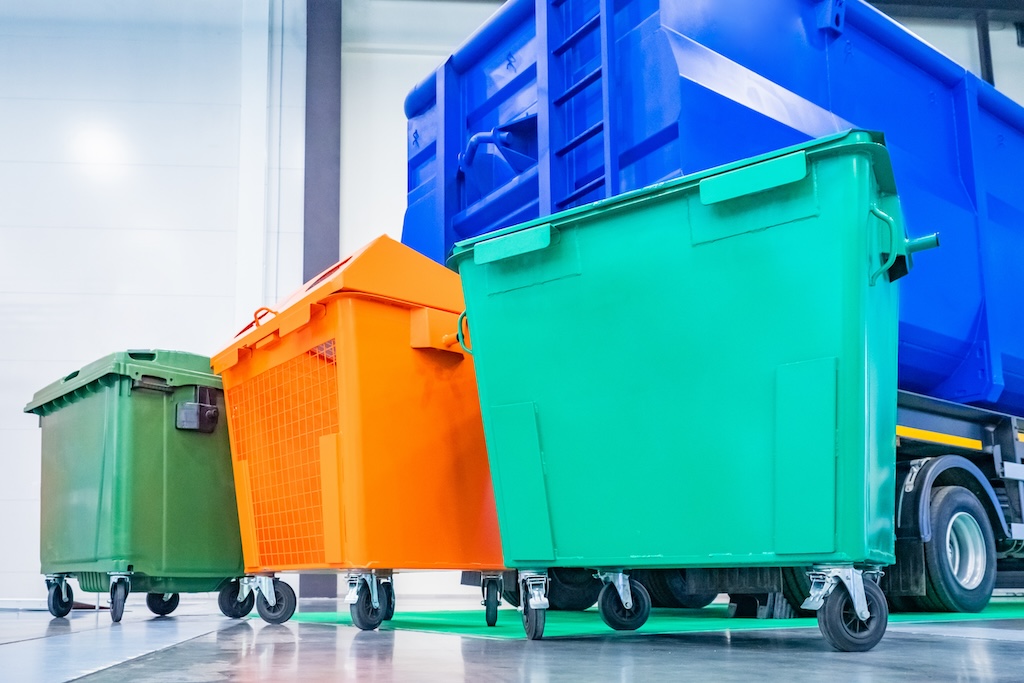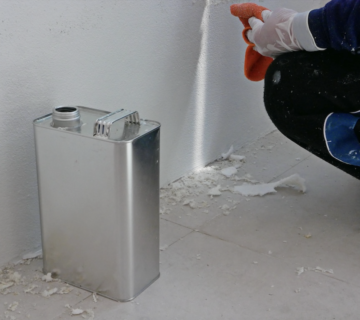After completing a painting project, you’re often left with leftover paint and various painting supplies. How you dispose of these materials is not just a matter of convenience but also of environmental responsibility and safety. Paints and related supplies can contain harmful chemicals that pose risks to the environment and human health if not disposed of properly. This blog discusses the best practices for the safe disposal of paint and painting supplies, ensuring that your painting project leaves a minimal environmental footprint. Proper disposal of paint and painting supplies is essential to prevent environmental contamination and protect human health. By following the guidelines outlined in this blog, you can ensure that your painting project contributes to a cleaner and safer environment for everyone.
Understanding the Risks
Paints, especially oil-based types, contain chemicals that can be harmful to the environment. When disposed of improperly, these chemicals can contaminate soil and water, posing risks to wildlife and human health. Even water-based paints, while less toxic, can pose environmental risks if not disposed of correctly. It’s essential to recognize the potential hazards associated with paint disposal to take appropriate measures to mitigate these risks. Additionally, understanding the environmental impact of paint disposal underscores the importance of adopting responsible disposal practices to minimize adverse effects on ecosystems and public health.
Disposing of Leftover Paint
Donate Unused Paint
If you have leftover paint that’s still in good condition, consider donating it. Local community centers, theater groups, schools, or charities often need paint for their projects. By donating unused paint, you can prevent it from going to waste and contribute to community initiatives that benefit others. Donating unused paint not only reduces waste but also supports community organizations and projects, fostering a sense of goodwill and cooperation within the community.
Store for Future Use
For small amounts of leftover paint, consider storing it for future touch-ups or small projects. Keep the paint in a sealed, labeled container and store it in a cool, dry place. Proper storage extends the shelf life of the paint and ensures it remains usable when needed, reducing the need to purchase new paint for minor repairs or projects. Storing leftover paint for future use promotes resource conservation and reduces the demand for new paint products, contributing to a more sustainable approach to home improvement projects.
Use a Paint Hardener
For disposal, first, make the paint safe for the landfill; for water-based paint, this can be as simple as leaving the lid off until the paint dries out; for larger quantities, or for oil-based paints, use a paint hardener. These substances speed up the drying process and make the paint safe to throw away. Utilizing paint hardeners facilitates the safe disposal of paint while minimizing environmental contamination. By employing paint hardeners, you can effectively solidify leftover paint, reducing its volume and making it safer and easier to dispose of in landfills or incinerators.
Check Local Disposal Guidelines
Many areas have specific guidelines for disposing of paint, particularly for oil-based paints which are often considered hazardous waste. Check with your local waste disposal services for guidance. Some communities offer regular collection events for hazardous household waste. Adhering to local disposal regulations ensures compliance with environmental laws and minimizes the risk of fines or penalties. Familiarizing yourself with local disposal guidelines and regulations enables you to dispose of paint safely and responsibly, avoiding potential legal and environmental consequences.
Disposing of Painting Supplies
Clean and Reuse Brushes and Rollers
Where possible, clean and reuse brushes, rollers, and trays. For water-based paints, you can clean these supplies with soap and water. For oil-based paints, you’ll need a solvent like mineral spirits. After cleaning, store them properly for future use. Reusing painting supplies reduces waste and conserves resources, contributing to a more sustainable approach to painting projects. By cleaning and reusing brushes and rollers, you can minimize waste generation and reduce the environmental impact of your painting activities.
Dispose of Soiled Rags Responsibly
Rags or paper towels soiled with paint can be a fire hazard due to the solvents they contain. Lay them flat outside to dry before disposal, or soak them in water and seal them in a metal container before disposing of them in the trash. Proper disposal of soiled rags prevents fire hazards and minimizes the risk of environmental contamination. By disposing of soiled rags responsibly, you can mitigate potential safety hazards and environmental risks associated with improper disposal practices.
Recycle Empty Paint Cans
Once completely empty and dry, metal paint cans can often be recycled with other household metals. Check your local recycling guidelines, as some areas accept paint cans in curbside recycling programs. Recycling empty paint cans reduces landfill waste and conserves resources, contributing to a more sustainable waste management system. Recycling empty paint cans reduces the demand for raw materials and energy required for manufacturing new metal products, helping to conserve natural resources and reduce environmental impacts.
Safe Disposal of Solvents
Solvents used for cleaning brushes from oil-based paints are hazardous and should never be poured down the drain or into the ground. Store used solvents in a sealed container and dispose of them during a hazardous waste collection event. Proper disposal of solvents prevents environmental contamination and protects water sources from pollution. By disposing of solvents properly, you can prevent environmental contamination and minimize the risk of adverse impacts on ecosystems and public health.
Final Thoughts
Proper disposal of paint and painting supplies is crucial for protecting the environment and ensuring safety. By following these guidelines, you can minimize the impact of your painting project on the environment. Remember, a little effort in disposal goes a long way in contributing to a healthier planet. Practicing responsible disposal habits not only benefits the environment but also promotes sustainable living practices for future generations. By adopting environmentally friendly disposal practices, you can play a part in preserving natural resources and safeguarding the planet for future generations. For more tips on environmentally friendly painting practices, visit our website at sisupainting.com and explore our blog at sisupainting.com/blog.





No comment